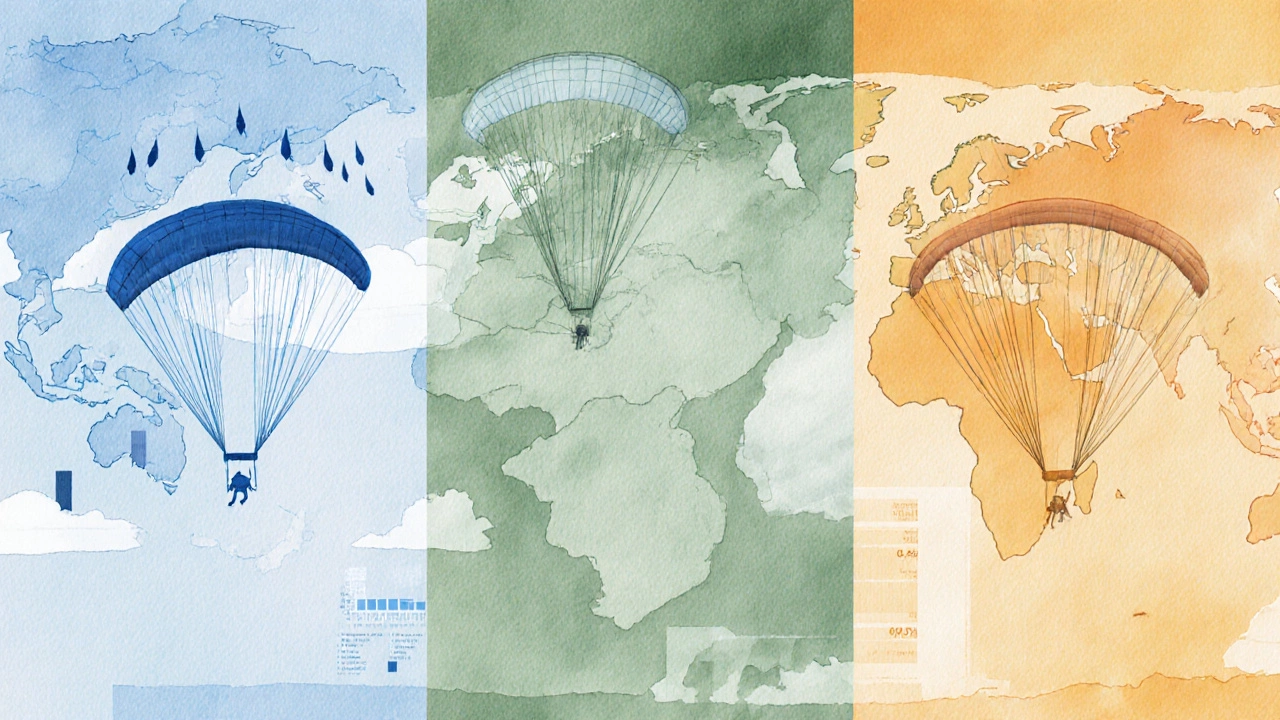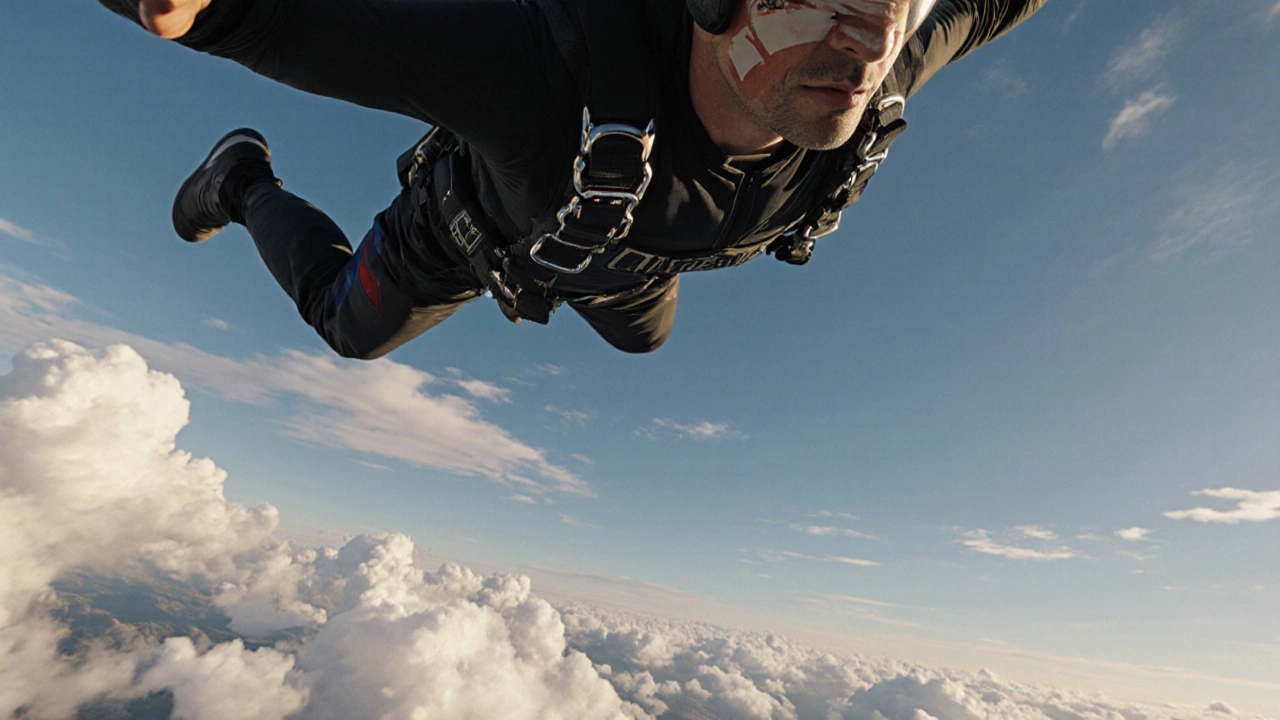Skydiving Fatality Rate Calculator
Calculate the fatality rate for skydiving based on jumps and fatalities. The rate is expressed as deaths per 100,000 jumps.
Note: The fatality rate is calculated as (fatalities / jumps) * 100,000
When you think of jumping out of a plane, the adrenaline rush is obvious, but the question that really matters is: skydiving fatality rate - how often does a jump end badly? This article breaks down the numbers, explains why they matter, and gives you real‑world tips to keep your jumps safe, especially if you’re exploring the sport from India.
What Does “Fatality Rate” Actually Mean?
In the world of extreme sports, Fatality rate is the number of deaths that occur per a set amount of activity - usually expressed as deaths per 100,000 jumps. It helps compare risk across regions, equipment types, and training methods.
It’s not a static figure. The rate evolves as safety gear improves, training standards rise, and the sport grows in popularity. Knowing the current rate lets you weigh the thrill against the real risk.
Global Skydiving Statistics - A Quick Snapshot
The United States Parachute Association (USPA) publishes the most comprehensive data. In 2023, the US saw 3.0 deaths per 100,000 jumps, based on 3.6 million jumps and 108 fatalities. Europe’s British Parachute Association (BPA) reported a slightly lower 2.2 deaths per 100,000 jumps.
These numbers sound high until you compare them with everyday activities. Driving a car in the U.S. results in roughly 12 deaths per 100,000 trips, while cycling is about 5 per 100,000 rides. Skydiving, despite its dramatic image, sits comfortably below many routine risks.

How India Stacks Up
India’s skydiving community is younger but growing fast. The India Parachute Federation (IPF) tracks jumps across over 30 drop zones, from Mysore to Ladakh. In 2022, the country recorded 1.8 deaths per 100,000 jumps - slightly better than the global average.
The lower rate is partly thanks to a rising emphasis on tandem jumps for beginners and stricter licensing for instructors. However, the data pool is smaller - about 400,000 jumps that year - so each incident swings the percentage more than in larger markets.
| Region | Jumps (millions) | Deaths | Fatality Rate |
|---|---|---|---|
| United States (USPA) | 3.6 | 108 | 3.0 |
| Europe (BPA avg.) | 2.1 | 46 | 2.2 |
| India (IPF) | 0.4 | 7 | 1.8 |
Key Factors That Influence the Fatality Rate
Understanding why some jumps end safely while others don’t helps you manage risk. Here are the main drivers:
- Experience level: Newcomers on their first few jumps have a higher incident rate. Tandem and AFF (Accelerated Freefall) programs dramatically reduce this risk.
- Equipment quality: Modern ram‑air parachutes with auto‑deployment systems are far safer than older canopies.
- Weather conditions: Wind gusts above 15‑20km/h increase the chance of hard landings.
- Drop zone standards: Certified drop zones keep strict maintenance logs for aircraft and gear.
- Human factors: Fatigue, distraction, or improper pre‑jump checks are common contributors.
In India, the rapid expansion of new drop zones means that regulatory oversight is critical. The IPF’s recent push for mandatory safety audits has already shown a dip in accident numbers.

Staying Safe - A Practical Checklist
Whether you’re a first‑timer or a seasoned jumper, a simple safety checklist can shave minutes off your prep time while saving lives.
- Verify the drop zone’s certification. Look for IPF or USPA accreditation displayed on the facility’s website.
- Inspect equipment. Check the parachute’s packing date, sewn seams, and reserve‑chute deployment handle.
- Review the weather. Use a trusted source (e.g., India Meteorological Department) and avoid jumps if wind exceeds the recommended limit.
- Complete the pre‑jump briefing. Confirm exit altitude, freefall time, and emergency procedures with your instructor.
- Practice emergency controls on the ground. Know how to pull the reserve, cutaway, and emergency cut‑away in low‑altitude simulations.
- Stay sober and well‑rested. Even a mild hangover can impair reaction time.
- Use a reputable harness. Modern 4‑point harnesses with quick‑release buckles reduce entanglement risk.
- Log every jump. Tracking your experience helps you spot patterns - a cornerstone of safer skydiving.
Following this list won’t eliminate risk, but it aligns you with the best practices that keep the global fatality rate under 3 per 100,000 jumps.
Frequently Asked Questions
What is the current global skydiving fatality rate?
As of the latest 2023 data, the worldwide average sits around 2.5 deaths per 100,000 jumps, with the United States at 3.0 and Europe at 2.2.
Is tandem skydiving safer than solo jumps?
Yes. Tandem jumps use dual‑redundant parachutes and are conducted by certified instructors, bringing the fatality risk down to roughly 0.5 deaths per 100,000 jumps.
How does India’s fatality rate compare to the global average?
India’s rate in 2022 was 1.8 deaths per 100,000 jumps, slightly better than the global average, thanks to strong growth in tandem programs and tighter drop‑zone regulation.
What equipment upgrades have most reduced fatalities?
Main improvements include the switch to ram‑air canopies, automatic activation devices (AADs) that deploy the reserve chute if a jumper doesn’t pull it by a set altitude, and more robust harness designs.
Can I check a drop zone’s safety record before booking?
Most certified drop zones publish their incident statistics on their websites or can provide them on request. Look for IPF or USPA affiliation as a quick safety indicator.
